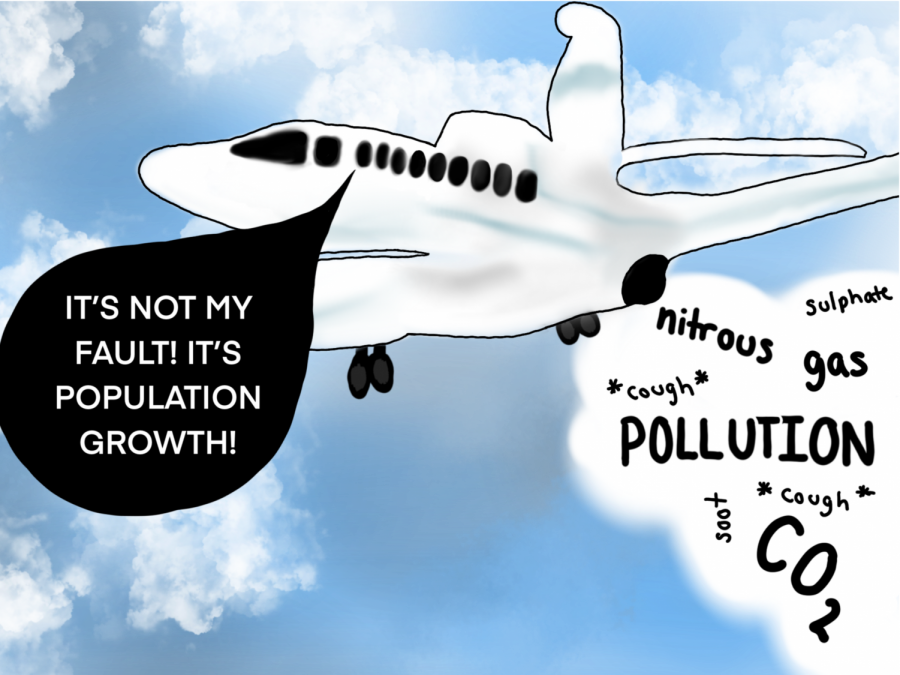“Population panic” distracts from the real drivers of climate change
We’ve all seen the headlines. Starving polar bears shivering on melting icebergs. Sea levels rising and flooding coastal towns and islands. Out of control tsunamis, hurricanes and wildfires destroying people’s homes and lives. Water that is so polluted you can set it on fire. Empty plains where there used to be massive forests and a healthy ecosystem. An energy and oil crisis that threatens our industrialized lifestyle.
There’s no doubt that humans are responsible for the climate crisis that faces our world. Scientists use the equation Impact = Population x Affluence x Technology (or I=PAT) to measure the effect we have on our ecosystems, and with a population upwards of 7 billion and growing fast, population growth is a real concern.
“It’s our population growth that underlies just about every single one of the problems that we’ve inflicted on the planet,” said Jane Goodall, primatologist and anthropologist. “If there were just a few of us, then the nasty things we do wouldn’t really matter and Mother Nature would take care of it — but there are so many of us.”
So clearly, the best way to solve climate change is to decrease the number of humans on the planet. Right?
Wrong.
It’s true that overpopulation is an issue, both socially and environmentally. Population growth is generally higher in countries with lower GDPs and less education and economic opportunity for women. Increasing a country’s GDP and education for women leads to a gradual stabilization in population, which is optimal for both the environment and people.
Statements like Goodall’s, however, serve as a cop-out for rich people with consumption that is significantly higher than the global average. In an article titled “Why we should be wary of blaming ‘overpopulation’ for the climate crisis,” Heather Alberro writes “the consumption of the world’s wealthiest 10% produces up to 50% of the planet’s consumption-based CO₂ emissions, while the poorest half of humanity contributes only 10%.” Blaming people who live low-consuming lifestyles for the world’s environmental problems feeds into racist and self-serving narratives.
Pointing fingers at poor people to justify living a high consumption lifestyle is not a recent phenomenon. Born in the 1700s, Thomas Malthus was well known for blaming reproductive rates in the underdeveloped world for growing environmental concerns. Malthus’ claim, that human population growth would outpace food production, failed to consider the role of the rich in environmental concerns. To some extent, we’ve modeled our modern thinking around Malthus’s outdated ideas by failing to hold the rich accountable for their significantly larger role in carbon emissions and climate change.
Goodall’s idea is to decrease the amount of humans so that the rich can continue our current lifestyles that fundamentally endanger our earth. Overblowing the effect of overpopulation on climate change excuses the lifestyle of Goodall and her billionaire friends. This shouldn’t be the goal. Instead, we should be trying to develop technologies and lifestyles that are inherently sustainable and don’t require a tiny population to avoid destroying the earth.
A worldview that points to population growth as the number one driver of climate change is inherently dangerous and perpetuates problematic and hypocritical actions. For example, in 2011, the UK was exploiting natural gas and oil from India while simultaneously funding programs to sterilize males in India in the name of ending the climate crisis. This example perfectly illustrates the harm in Goodall’s claim: if rich nations and rich people create narratives that paint them as the saviors of the climate crisis instead of the perpetrators, they have backing to address it in unethical ways.
There are, however, sustainable and equitable ways to face the issue of population growth. Addressing poverty at the root source is the most ethical and effective way to solve this problem. Access to education, increase in health infrastructure and improved employment, specifically for women, help to increase GDP and lower birth rate.
Nevertheless, this is a long term solution. If a large group of people under the age of fifteen exists, population momentum will delay the stabilization of the population for years to come. Stabilizing, or even decreasing, the number of humans on the planet in a socially sustainable way will take a significant amount of time, and will be largely ineffective in counteracting the immediate climate crisis.
Instead of blaming population growth for climate change, we need to address the true problems. With wealth gaps increasing and rich people disproportionately consuming resources, the discussion of climate change can’t just be an environmental one but must also focus on social sustainability. Blaming overpopulation for our problems is a way for rich people to avoid their personal responsibility while pretending they are fixing the problem. Billionaires flying on their private jets to global climate summits is a staggering example of the hypocrisy that is putting our world at risk.
When engaging with narratives about climate change, it is important to remember who they are from and what their goal is. Many of the supposed “solutions” we see are in fact self-serving and deflect responsibility rather than working to address issues in an unbiased way. Since climate change will disproportionately affect the less wealthy, it is necessary to center their perspectives in your environmental work.

